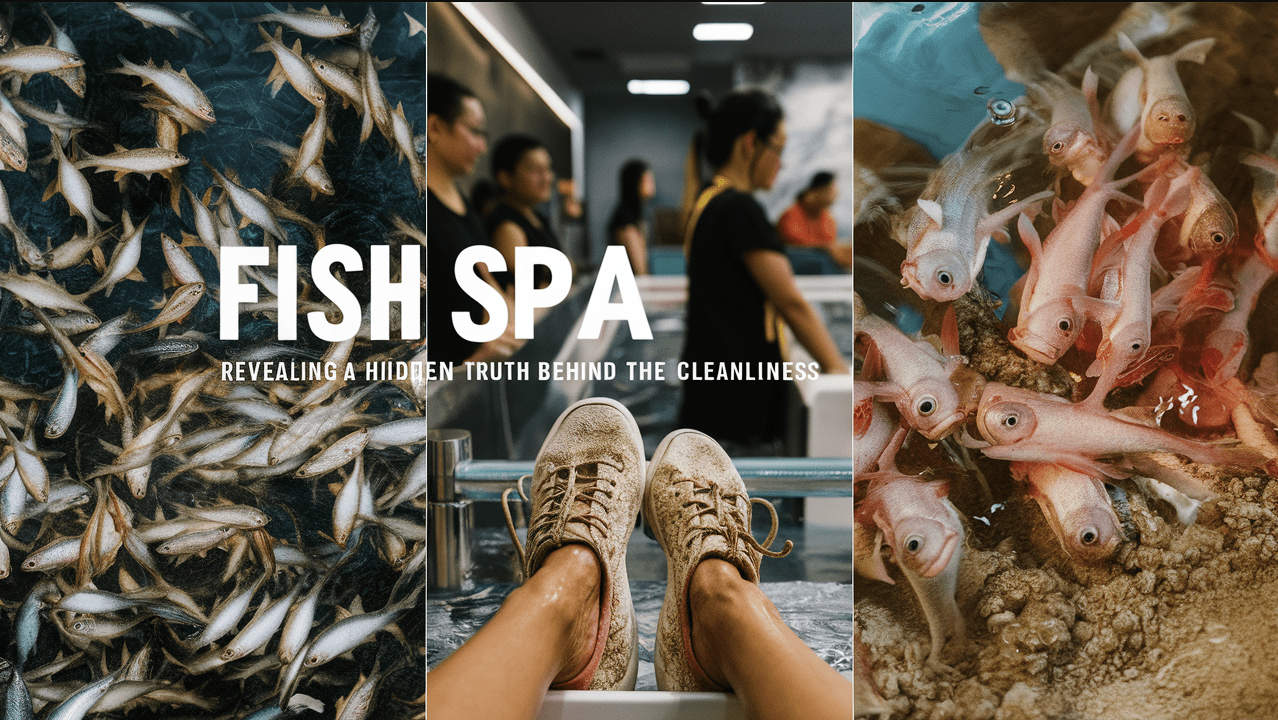Ever found yourself dipping your toes into a pool of tiny, hungry fish, all eager to provide you with a unique pedicure experience? Fish spas, where small fish nibble away dead skin, have gained popularity worldwide due to their novelty and supposed therapeutic benefits. But have you ever paused to wonder: how clean are these fish spas really? In this article, we delve into the hygiene practices of fish spas, the potential risks, and what precautions you should take before offering your feet to the fishy masseuses.
The Appeal of Fish Spas
Fish spas, also known as “Doctor Fish” spas, originated in the Middle East and Asia, and involve immersing your feet in water filled with Garra rufa fish. These tiny fish nibble away at the dead skin on your feet, leaving them feeling smooth and rejuvenated. The method is said to provide several benefits:
- Exfoliation: Natural removal of dead skin cells.
- Improved Blood Circulation: The nibbling action stimulates blood flow.
- Therapeutic Effect: The experience can be relaxing and stress-relieving.
However, despite these appealing benefits, questions about hygiene and cleanliness often arise.
Hygiene Practices: Are Fish Spas Really Clean?
Water Quality
The cornerstone of any fish spa’s cleanliness is the water quality. Contaminated water can be a breeding ground for bacteria and disease, creating a risk for both clients and the fish.
- Water Filtration and Treatment: Reputable fish spas maintain stringent water filtration systems that include ultraviolet (UV) light treatment, which helps eliminate harmful bacteria and viruses. Regularly changing the water is also crucial to maintaining cleanliness.
- Water Testing: Regular testing of water quality can detect contaminants early. The best spas keep logs of their water testing results and are transparent about their practices.
“The cleanliness of the water is paramount. Without rigorous water filtration and frequent testing, the risk of infections increases.” – Dr. Annabelle Green, Dermatologist
Fish Health
The health of the Garra rufa fish is another key aspect. Healthy fish not only provide better service but are also an indicator of a clean environment.
- Feeding Practices: Contrary to popular belief, reputable spas do not starve fish to make them more eager to nibble on human skin. Starvation weakens the fish and can contribute to the spread of disease.
- Inspection and Quarantine: New fish should be quarantined and inspected for disease before being introduced to the tanks.
Customer Hygiene
A customer’s pre-treatment hygiene is also crucial. Fish spas must ensure that clients’ feet are thoroughly cleaned before the treatment to minimize contamination.
- Foot Cleaning Stations: Providing antibacterial foot baths before the treatment begins.
- Towel and Bathing Gel: Offering disposable towels and antiseptic gels to help clients clean their feet thoroughly.
Potential Risks and Regulations
Infection Risks
There are legitimate concerns about the risk of infections, particularly if proper hygiene practices are not strictly followed.
- Bacterial and Fungal Infections: These can arise from contaminated water or fish.
- Bloodborne Pathogens: There’s a risk, albeit low, of transmitting bloodborne diseases if the fish bite too deeply.
Regulatory Oversight
Different countries have varying regulations concerning fish spas. In some places, like certain states in the U.S., fish spas are banned entirely due to hygiene concerns. In other regions, regulations are more lenient but still require adherence to specific health and safety standards.
What You Can Do: Precautions for a Safe Fish Spa Experience
If the allure of the fish spa is irresistible, there are steps you can take to ensure a cleaner, safer experience:
- Research: Look for reviews and testimonials about the spa’s cleanliness.
- Ask Questions: Don’t hesitate to inquire about the spa’s water treatment processes, how often they change the water, and the health protocols for the fish.
- Inspect: Before dipping your feet, take a look around. Clean facilities are typically a good sign of good hygiene practices.
- Personal Hygiene: Ensure your feet are thoroughly cleaned before and after the treatment.
Conclusion
While the novelty and potential benefits of fish spas may be tempting, cleanliness should not be compromised. Understanding the significance of water quality, fish health, and customer hygiene can help mitigate risks. By taking proactive steps such as researching and asking pertinent questions, you can enjoy this unique experience with peace of mind. Whether you’re a seasoned fish spa enthusiast or a curious first-timer, being informed can lead to happier and healthier feet.
“The key to enjoying a fish spa safely is vigilance. If clients and spa operators alike prioritize cleanliness, the experience can be both unique and beneficial.” – Sarah Lopez, Spa Hygiene Expert
By being aware of the hygiene practices and potential risks, you can make an informed decision and ensure that your fish spa experience is not only enjoyable but also safe.
For more information on the regulations concerning fish spas, you can refer to CDC Guidelines on Fish Pedicures and Health Canada’s Fish Spa Advice. If you’re interested in other spa treatments, check out our article on The Safest Spa Treatments for Sensitive Skin.
